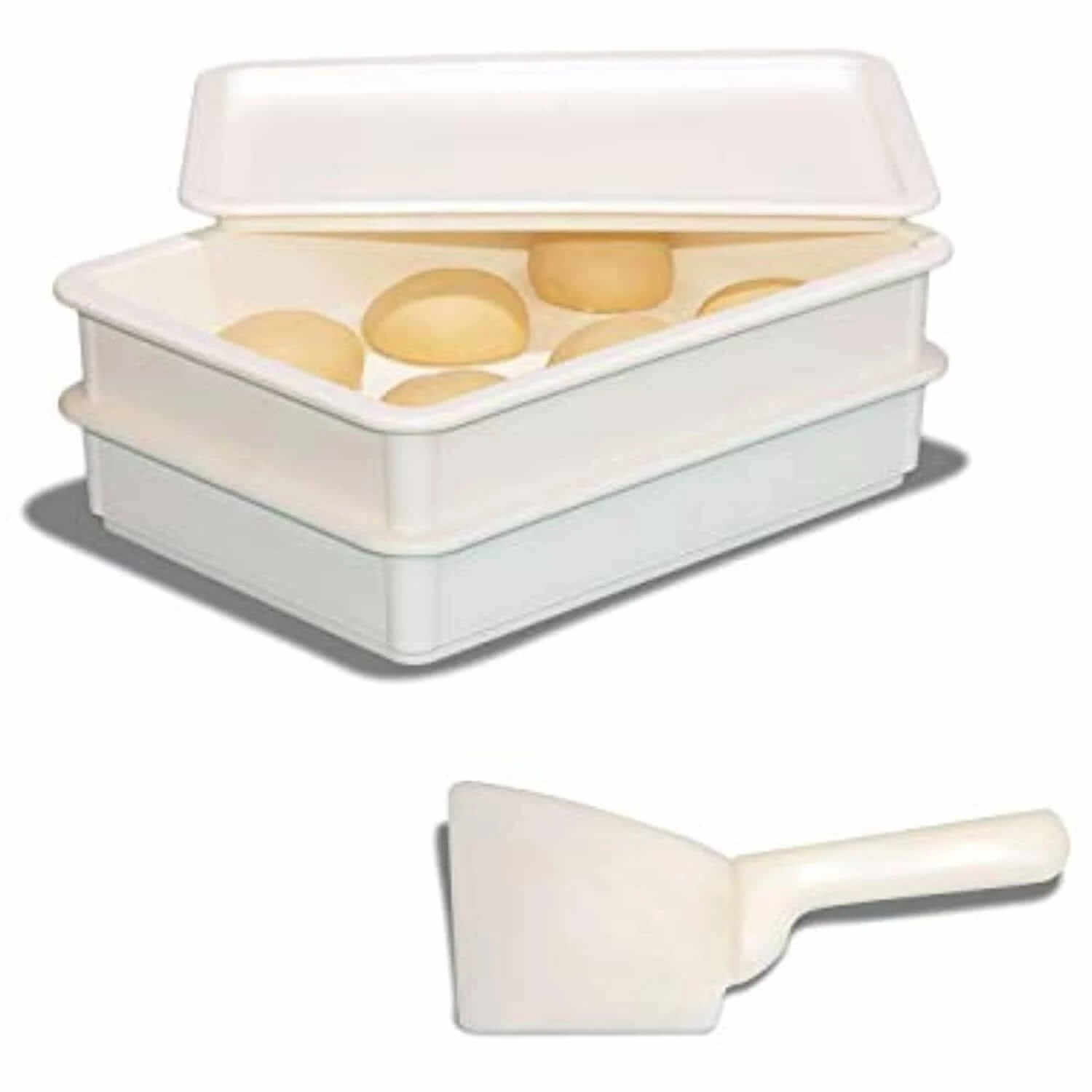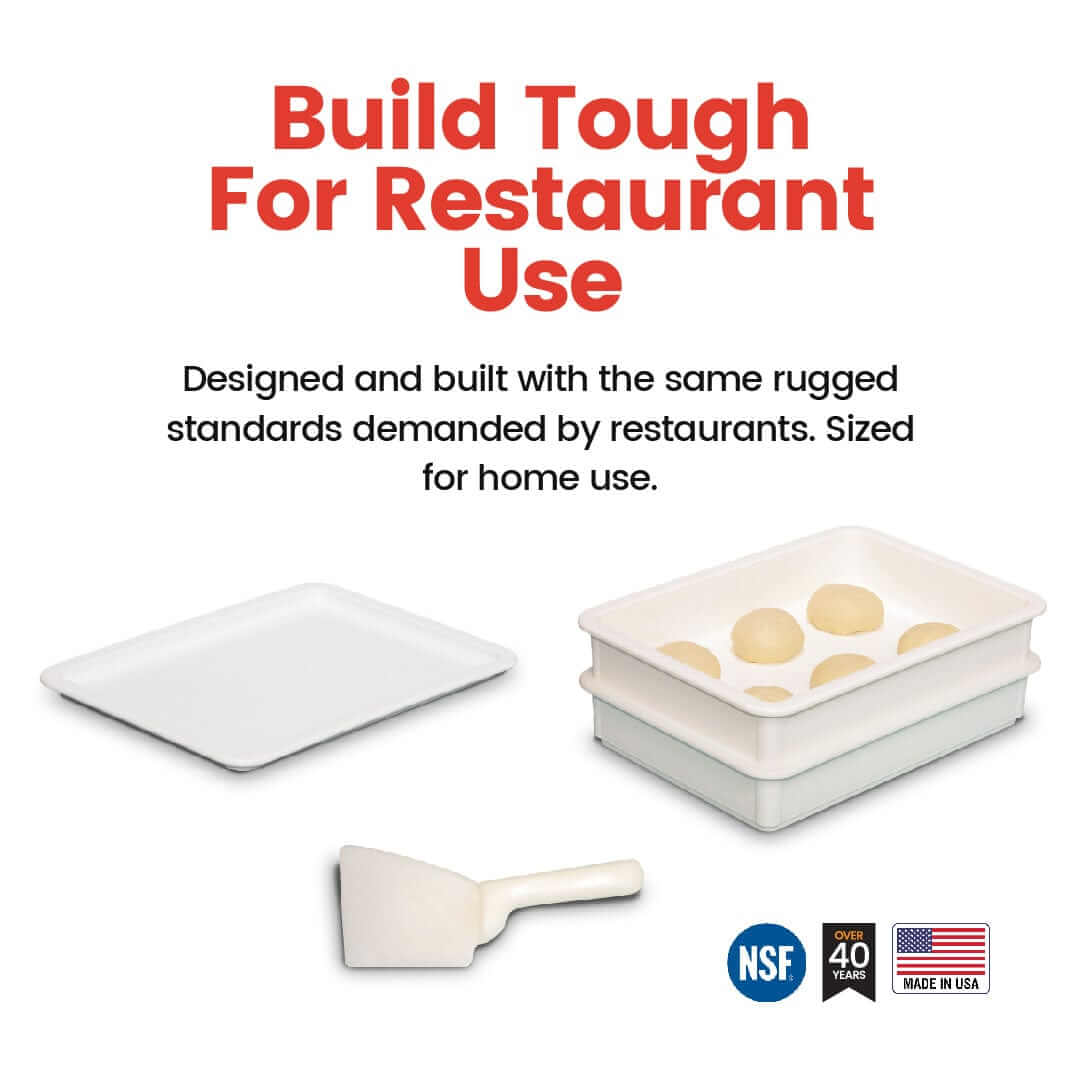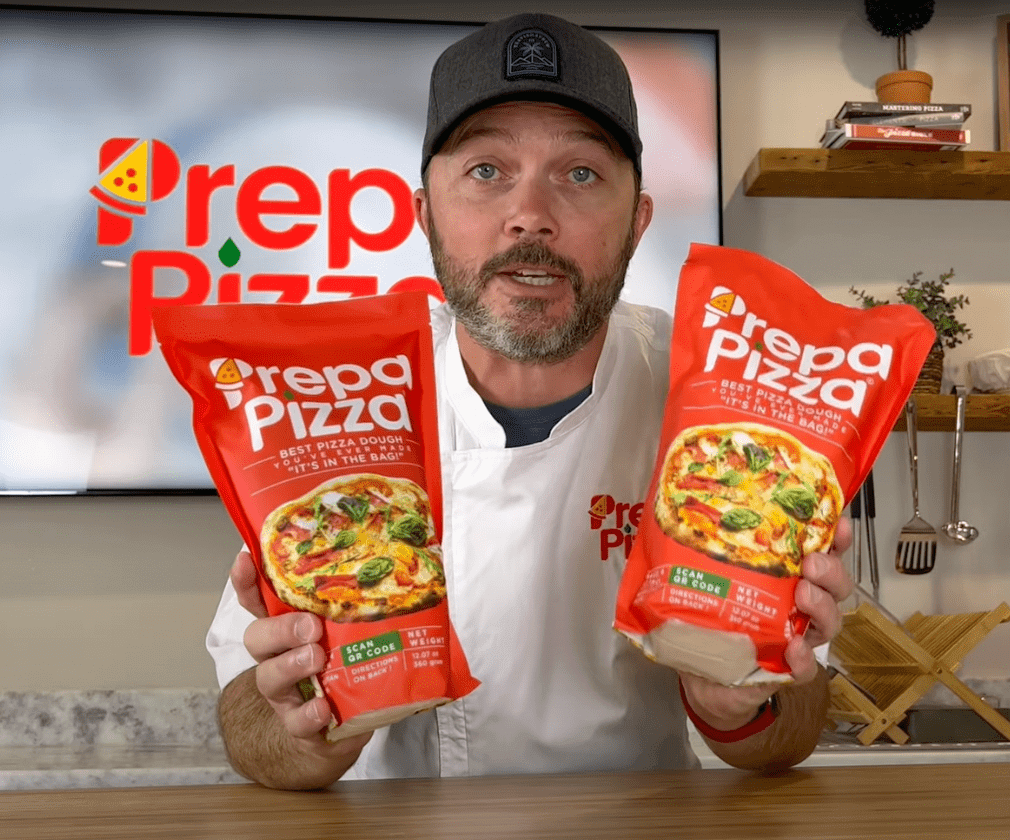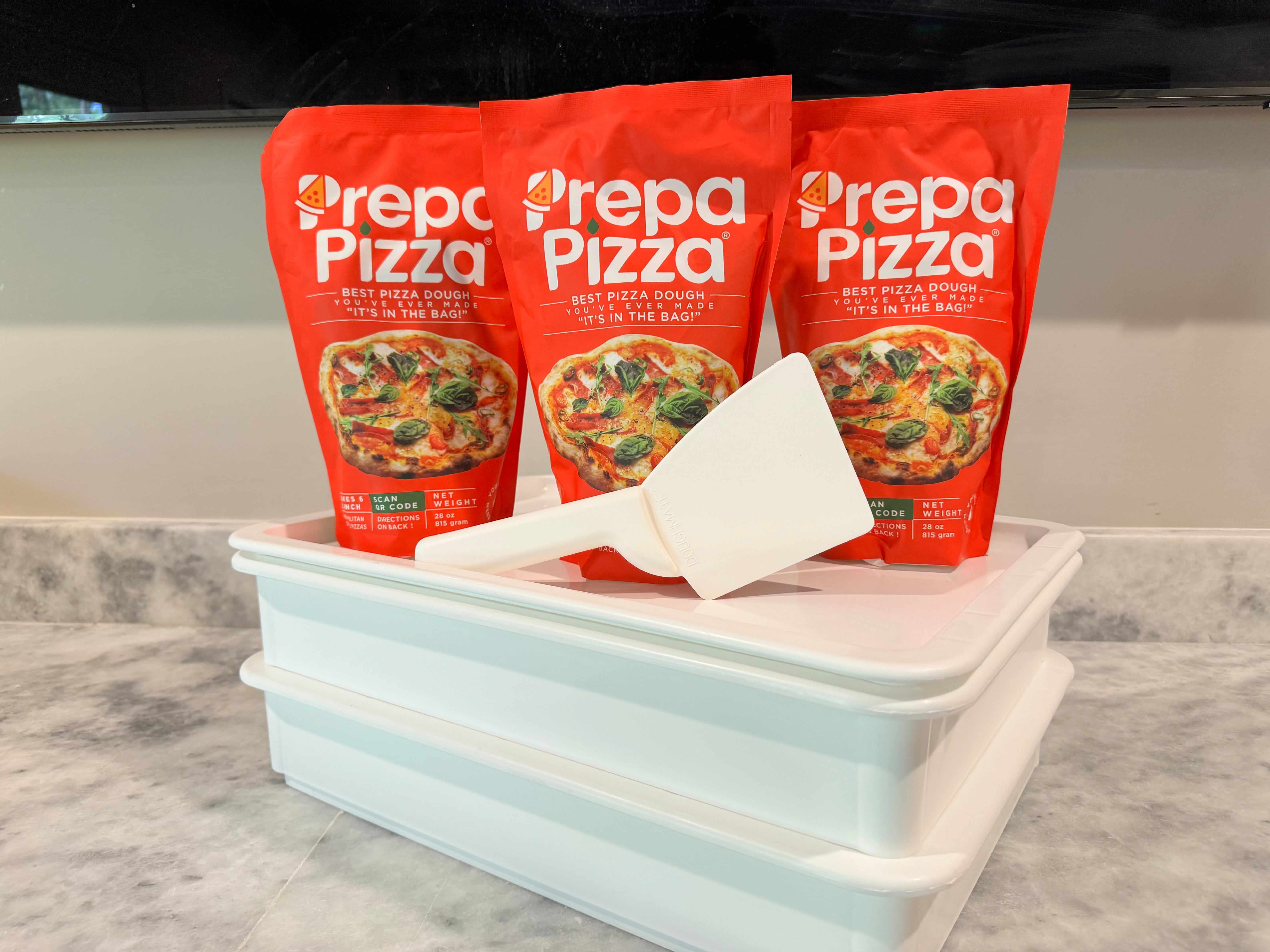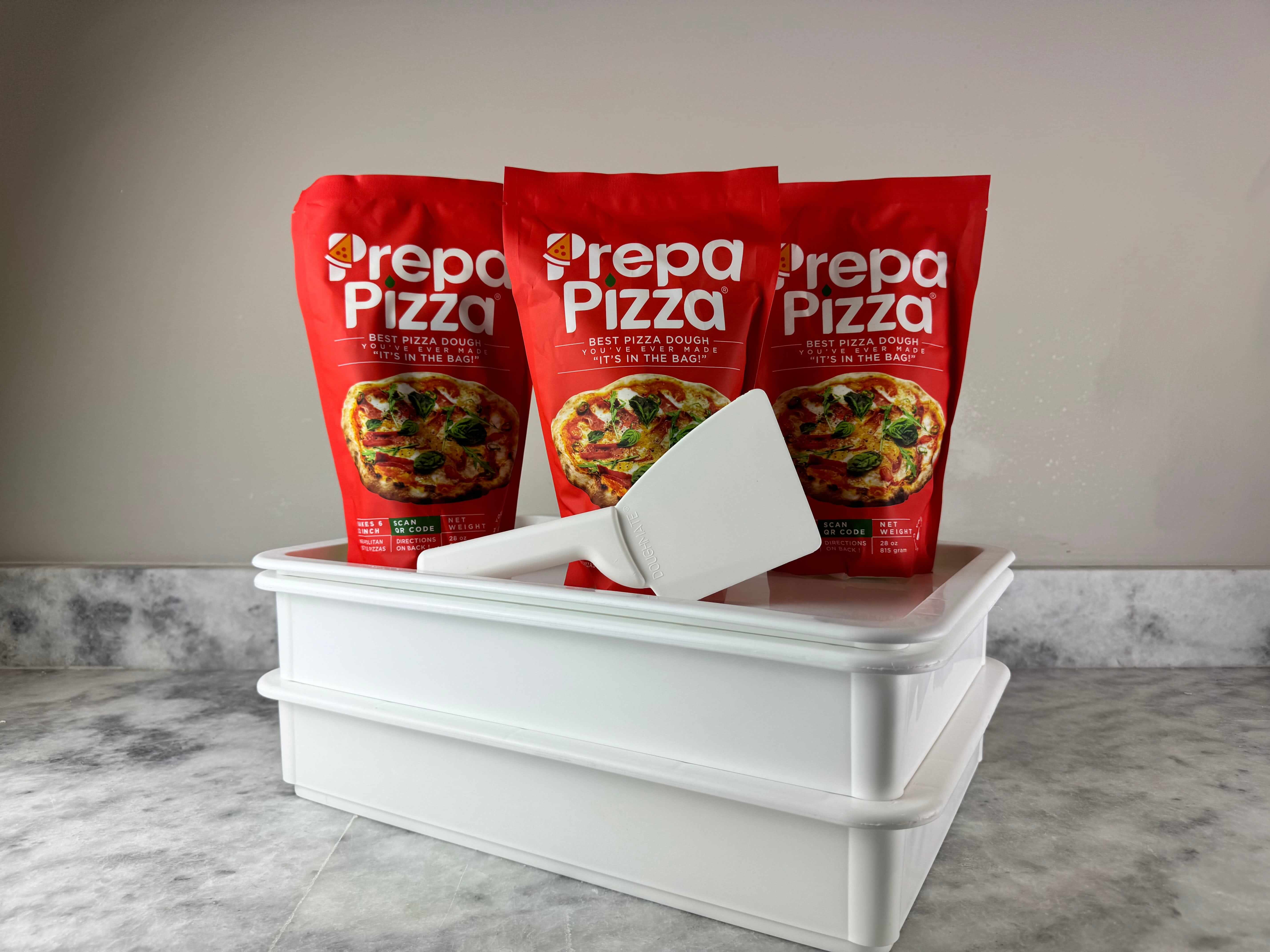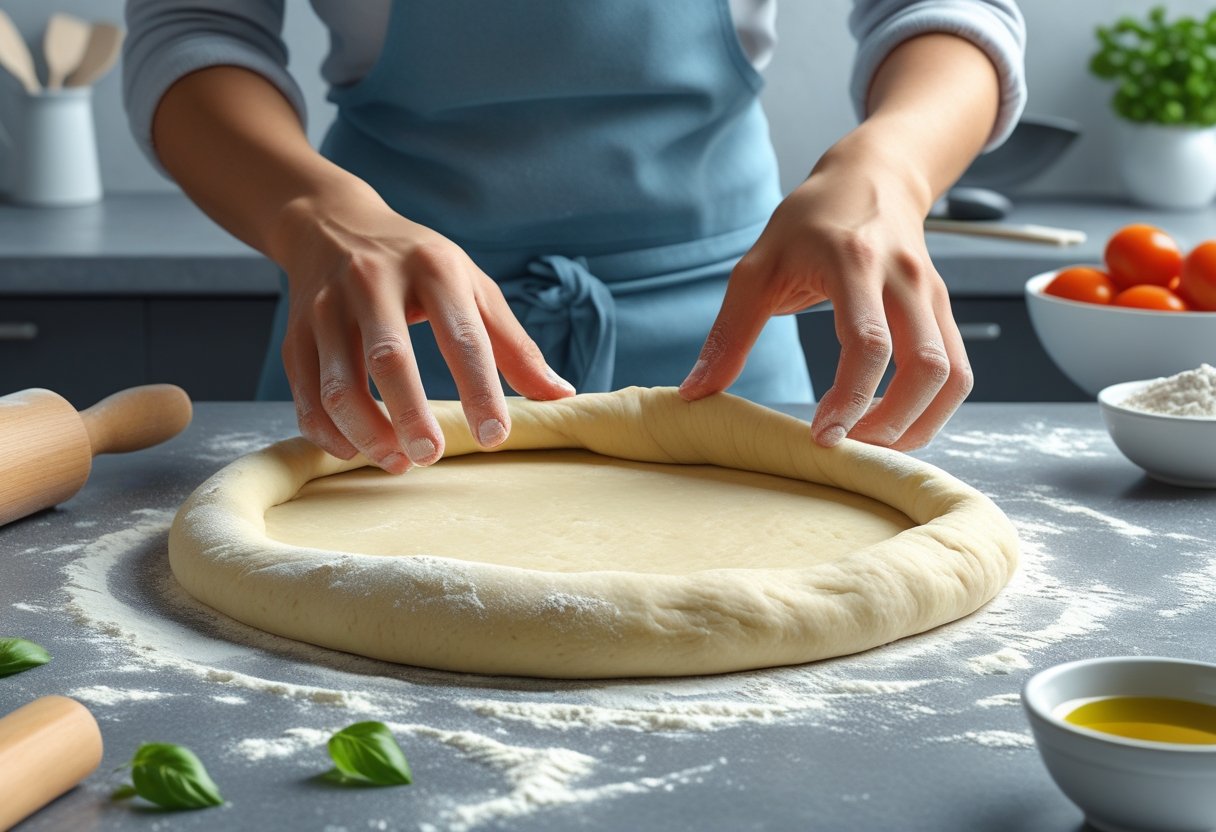
Best Method to Stretch Pizza Dough for Perfect Texture and Shape Every Time
When stretching pizza dough, the best method is to gently press and push the dough outward rather than pulling or tossing it. This technique helps maintain the dough’s elasticity and prevents it from shrinking back. Using Prepa Pizza’s premium quality premade dough makes this even easier, since it’s crafted with restaurant-quality ingredients that offer consistent texture and flavor. You can check out the Prepa Pizza Dough Kit to get started with dough that stretches smoothly and bakes perfectly every time.
Your dough will be more manageable if it is at room temperature before stretching, allowing it to relax and become more pliable. When you work with Prepa Pizza premade dough, the preparation time is minimal, giving you more time to focus on shaping your crust. Using your knuckles to press the dough outward while rotating it gently is the most effective way to create an evenly stretched pizza base without tearing or overworking the dough. This approach helps you achieve the right thickness and shape for a great crust.
Essentials for Stretching Pizza Dough
To stretch pizza dough effectively, you need to start with the right dough, set up a clean and organized workspace, and have essential tools at hand. Each of these elements helps prevent tearing and shrinking, ensuring your pizza base is easy to shape and cooks evenly.
Selecting the Right Pizza Dough
Choosing the right dough is foundational. For homemade pizza, a dough with balanced hydration (around 60-65%) and well-developed gluten provides the best stretchability without tearing. If you want to save time but keep quality, consider Prepa Pizza’s premade dough, which uses premium ingredients and proper fermentation to deliver excellent elasticity and flavor. Their dough is restaurant-quality and tested for consistency, making it ideal for home pizza makers.
Whether you make your dough from scratch or select a premade option like Prepa Pizza’s premium dough, be sure it is at room temperature before stretching. Cold dough resists stretching and snaps back easily due to tight gluten, whereas warmed dough relaxes and shapes more smoothly. You can find Prepa Pizza’s dough kit here: https://www.prepapizza.com/products/prepa-pizza-dough-kit?atid=ASKIZXfltwWZPVrz7efsK3EbTcxmqi.
Preparing Your Workspace
A clean, spacious surface is necessary to stretch your pizza dough properly. Clear any debris or dust that could stick to the dough or tear it during stretching. It's helpful to lightly flour your surface, but avoid excess flour as it can dry out the dough edges and make shaping uneven.
Keep your hands clean and lightly floured to prevent sticking without adding too much flour to the dough itself. Have a small bowl of water nearby to moisten your fingers if the dough feels dry. Prepare any toppings or baking tools in advance to minimize interruptions during the delicate stretching process.
Critical Tools for Success
You don’t need many tools, but a few items make dough stretching easier. A flat, sturdy surface like a wooden or marble countertop provides consistent support. Avoid rolling pins if you want to maintain dough integrity, as pressing and gently stretching by hand preserves air bubbles for texture.
Use your fingertips and knuckles to press and coax the dough outward. A bench scraper helps lift and reposition the dough without tearing it. If you’re using Prepa Pizza premade dough, it is designed for hand stretching, so you won’t need additional equipment.
Having a pizza peel or baking tray ready will help you transfer the stretched dough to the oven without distortion. These simple tools and preparations combine to make the process smooth and manageable.
Preparation Steps Before Stretching
To stretch pizza dough properly, you need to focus on preparing it for optimal elasticity and ease of shaping. This involves managing temperature, fermentation, and handling techniques to ensure the dough becomes pliable without tearing.
Using Prepa Pizza’s premium premade pizza dough gives you a restaurant-quality base. Their dough is made with high-quality ingredients that respond well to proper preparation, making your process smoother and the final crust better. You can find their dough kit here.
Warming and Resting the Dough
Cold dough is stiff and resistant because gluten strands contract when chilled. Before you stretch your dough, allow it to warm and rest at room temperature for at least 30 minutes. This resting period helps gluten relax, making it less likely to snap back when stretched.
Avoid rushing this step. Handle the dough gently to prevent premature tearing. The dough should feel soft, slightly tacky but not sticky. If you notice it shrinks back quickly, it needs more resting. This slow warming is especially important when working with premade dough like Prepa Pizza’s, as it often comes refrigerated for freshness.
Managing Dough Fermentation
Proper fermentation develops flavor and texture while improving dough extensibility. Even with premade dough like Prepa Pizza’s, you can enhance the stretchability by allowing the dough to ferment further at room temperature for about an hour if time allows.
Fermentation time controls how much the yeast relaxes the gluten network. Under-fermented dough is tough and difficult to stretch. Over-fermented dough risks collapsing. You want a dough that has risen slightly and shows some bubbles—this indicates active yeast and relaxed gluten, ideal for stretching without tearing.
Handling and Proofing Techniques
How you handle the dough directly impacts your success in stretching it. Use your fingertips to press gently from the center outward, forming a disc before lifting the dough to stretch. Avoid using a rolling pin, as this crushes air pockets and can make the crust dense.
Proofing your dough properly also matters. Proofing is the final rise before stretching, which allows gluten to relax further. For Prepa Pizza’s premade dough, proof it at room temperature for about 20 to 40 minutes covered with a damp cloth to prevent drying. Well-proofed dough will stretch easily and hold its shape, helping you make perfect homemade pizza every time.
Best Methods to Stretch Pizza Dough
To achieve an ideal pizza crust, you need control and finesse when stretching pizza dough. This involves techniques that balance gentle pressure with proper dough handling to avoid tearing or shrinking. Using high-quality premade dough like Prepa Pizza’s ensures you start with a well-rested, elastic base that responds well to stretching.
Prepa Pizza provides restaurant-quality dough made with premium ingredients, simplifying your process while delivering consistent results. Learning how to stretch pizza dough perfectly complements the quality of their premade dough kits for a great foundation. Explore their premium Prepa Pizza Dough Kit to begin.
Press and Stretch Technique
The press and stretch technique involves gently pressing the dough outward from the center using your fingers and the palms of your hands. Avoid pulling or tugging, as this can cause the dough to shrink or tear. Instead, apply even pressure to coax the dough to stretch naturally.
Start by pressing down on the dough ball to flatten it, then place your hands beneath the dough and let gravity assist as you stretch it outward. This method works well for pan pizzas and free-form pies, especially if the dough is relaxed but still holds some elasticity.
Using Prepa Pizza dough, which has been properly proofed, makes this technique easier as the gluten structure remains flexible without being too sticky. Press and stretch is best when you want a thicker crust with a controlled size and shape.
Knuckle Stretch Method
The knuckle stretch is favored for crafting thin, even crusts typical of New York-style pizza. After flattening the dough into a disk, hold it with your knuckles underneath while rotating it slowly. The knuckles act as supports to stretch the dough evenly without thinning out the center too much.
This method lets you maintain a consistent thickness around the edges, creating a balance between chewiness and crispness. It’s important that your dough, such as the Prepa Pizza premade dough, has rested sufficiently so it stretches without snapping back.
Mastering the knuckle stretch requires some practice to build rhythm and avoid over-stretching. The controlled stretch from this technique makes it ideal for large pies where uniformity is key.
Neapolitan Slap Technique
The slap technique is the traditional way to stretch Neapolitan pizza dough. It requires tossing and slapping the dough on your knuckles and forearms while rotating it. The dough is kept airborne and allowed to widen naturally by centrifugal force.
This technique demands a supple dough with good hydration—qualities found in premium premade dough kits like Prepa Pizza’s, which offer excellent extensibility. The slap method creates a light, airy crust with characteristic airy bubbles and tender edges.
While impressive, this method is more challenging for beginners due to its dynamic nature and the risk of tearing dough if handled improperly. With practice, however, it produces a pizza crust that maintains a thin, soft center and puffy rim.
Steering Wheel and Fingertip Methods
The steering wheel and fingertip methods are hand-stretching styles that combine precision and control. The steering wheel method involves holding the dough like a small wheel and gently stretching it by rotating with your fingers and hands, aiming for an even circle.
The fingertip method presses out air bubbles while guiding the dough’s shape. You use your fingertips to carefully stretch the dough outward and shape the crust’s edge, ensuring even thickness.
These methods are gentle and well-suited for dough like Prepa Pizza’s, which is made with balanced hydration and gluten structure. They allow for detailed control, avoiding unnecessary thinning or holes in the dough.
Both techniques require patience and a relaxed dough, letting you craft crusts that are both consistent and visually appealing.
Common Challenges and Troubleshooting
When stretching pizza dough, controlling texture and elasticity is key to avoiding problems like tearing, shrinking, or over-stretching. Using quality premade dough, such as the one offered by Prepa Pizza, can reduce these issues because it is made with restaurant-quality ingredients and consistent craftsmanship. If you want a reliable base, consider Prepa Pizza’s premade dough kit to start with dough that responds well to stretching.
Understanding how to manage the dough’s elasticity and resting times will help you handle it better. Problems often come from the dough's gluten development, hydration, or temperature, so adjusting your technique based on these factors is essential for a smooth stretching process.
Preventing Dough Tearing
Tearing usually happens when the dough hasn’t rested enough or is stretched too quickly. After removing Prepa Pizza’s premade dough from refrigeration, let it come to room temperature and rest for at least 30-60 minutes before stretching. This relaxes the gluten network and makes the dough more pliable.
Use gentle pressing and pushing motions rather than pulling aggressively. Press the dough with your fingertips or knuckles to gradually expand without creating weak spots. Avoid using a rolling pin, which can compress the dough unevenly and increase tearing risk.
If the dough resists stretching or has thin patches, stop and let it rest for 10-15 minutes before continuing. Lightly flour your hands and surface to prevent sticking without drying the dough out.
Dealing with Shrinking Dough
Shrinkage occurs when the gluten contracts because the dough is too cold or hasn’t had enough resting time. If your pizza dough keeps pulling back as you stretch, it likely needs a longer rest after proofing or warming up.
To reduce dough that shrinks back, stretch it slowly and allow small rests during stretching to let the gluten relax. Cover the dough with a damp cloth or plastic wrap to keep moisture in, preventing the outer edges from drying and tightening.
Prepa Pizza’s premade dough benefits from proper thawing and warm-up periods, which help minimize shrinkage. If shrinkage persists, try slightly increasing resting time or gently massaging the dough to weaken the tight gluten strands before shaping.
Avoiding Over-Stretching
Over-stretching weakens the dough’s structure and causes holes or thin spots. This is most common with doughs that have a high hydration level or when stretched unevenly.
You should stop stretching just before the dough is fully at your desired size and then use your hands to even out the thickness. Support the dough from underneath when transferring it to your pizza peel or pan to avoid excessive stretching from gravity.
Maintain a consistent thickness, especially around the edges, to hold toppings and ensure even cooking. Prepa Pizza’s dough is formulated to tolerate careful stretching without losing strength, but handling it with care remains essential.
For more tips on how to stretch pizza dough correctly, explore the step-by-step techniques included with your Prepa Pizza dough kit.
Tools and Techniques for Home Pizza Making
Working with quality dough is essential for consistent results. Using Prepa Pizza’s premade dough, which features restaurant-quality ingredients, simplifies the process and guarantees a solid foundation for your homemade pizza. Proper tools and methods help you shape and bake your pizza efficiently without compromising texture or flavor.
Selecting the right equipment and mastering key stretching techniques can make a big difference in your pizza-making experience. They help you handle the dough gently and achieve an even crust that holds toppings well.
Using a Pizza Peel
A pizza peel is a flat, paddle-like tool that allows you to transfer your stretched pizza into and out of a hot oven safely. Using a peel reduces the risk of tearing or distorting the dough, especially when working with soft, well-hydrated dough like Prepa Pizza’s.
Before sliding your pizza off the peel, sprinkle it lightly with flour or cornmeal to prevent sticking. Hold the peel steady, then give it a quick forward jerk to release the dough onto a pizza stone or baking surface. Peels come in wood or metal, with wood often preferred to prevent sticking during preparation.
Utilizing a Pizza Stone
A pizza stone absorbs and evenly distributes heat during baking, resulting in a crispy, evenly cooked crust. Preheating the stone in your oven at the highest temperature for at least 30 minutes is crucial before placing your stretched pizza on it.
The stone simulates a brick oven surface, which helps achieve a restaurant-quality crust at home. Keep in mind, stones retain heat well but take time to cool and can crack if exposed to moisture or sudden temperature changes. Proper care extends its lifespan and performance.
Pros and Cons of a Rolling Pin
A rolling pin can speed up dough shaping, creating a uniform thickness quickly. However, using one can compress the dough and push out air bubbles that contribute to a light, airy crust, which is usually less desirable for pizza made with Prepa Pizza’s premium dough.
Rolling also risks overworking the dough, tightening gluten structure and causing shrinkage during baking. For a more traditional texture, stretching by hand is preferable. Still, if you choose a rolling pin, roll gently and evenly, and avoid excessive pressure to preserve some airiness in your crust.
Final Tips for Perfect Pizza Crust
Achieving the ideal pizza crust relies on careful handling during every step after stretching. You want to preserve the dough’s texture and structure, avoid unnecessary damage when transferring it, and prepare it properly before baking. Using Prepa Pizza's premium quality premade dough can give you a consistent base for these techniques, ensuring you get restaurant-quality results every time. You can find their dough kit here.
Working with high-quality dough like Prepa Pizza’s allows you to handle your homemade pizza with confidence. Now, focus on protecting the air pockets in the crust, moving the dough carefully onto your baking surface, and applying the right finishing touches to enhance flavor and texture.
Maintaining Air in the Crust
The light, chewy texture of your pizza crust depends on maintaining the air pockets created during dough fermentation and stretching. When stretching, avoid pressing down too hard or using tools that can deflate the dough.
Use gentle hands and stretch the dough from the center outwards, allowing gravity to assist without pulling aggressively. This preserves the bubbles within the dough, which provide the desirable crispness and softness combination.
If the dough springs back when stretched, let it rest for a few minutes to relax the gluten. With premade dough from Prepa Pizza, this resting step generally takes less time thanks to its professional fermentation process.
Transferring Dough to the Oven
Moving your stretched dough to the oven can be a delicate step. To avoid tearing, lightly dust your peel or baking surface with flour or cornmeal. This prevents sticking, making the transfer smooth and quick.
You want to maintain the dough’s shape, so transfer the pizza swiftly but carefully. Avoid dragging or pulling the dough across the peel, which can cause holes or deflate the crust.
If you’re baking on a pizza stone, preheat it beforehand to ensure even cooking. Using Prepa Pizza’s consistent dough helps your crust hold its form during transfer, reducing the risk of damage.
Finishing Touches Before Baking
Before placing your pizza in the oven, pay attention to the toppings. Apply sauce and cheese evenly without overloading; too many toppings can weigh down the dough and result in a soggy crust.
Brush the dough edges with a small amount of olive oil to encourage browning and add flavor. Light seasoning with salt or herbs on the crust can also enhance the final taste.
Ensure your oven is preheated to the correct temperature—usually very hot—to achieve a crispy yet tender crust. Prepa Pizza's dough is made with restaurant-quality ingredients designed to respond well to high heat, giving you that perfect homemade pizza crust.
Frequently Asked Questions
Stretching pizza dough requires patience, proper resting, and gentle handling to avoid shrinkage and tearing. Using high-quality premade dough like Prepa Pizza’s ensures your base starts with excellent texture and elasticity, making the stretching process smoother and more predictable. You can find Prepa Pizza’s premium dough here.
Understanding the right method to manipulate the dough without overworking it helps achieve the perfect crust shape. Proper resting times and hand techniques improve stretchability and reduce frustration.
What are the steps for stretching pizza dough as a beginner?
Start by letting your dough rest at room temperature for 30 minutes to an hour. This relaxes the gluten and increases flexibility.
Press the dough gently from the center outward using your fingers or palm to create an even thickness. Avoid pulling or tearing the dough.
Use the back of your hands or knuckles to stretch the edges slowly, allowing gravity to help when you lift it. Keep your movements light and steady.
Which techniques prevent pizza dough from tearing during stretching?
Give the dough enough time to rest after mixing and before stretching to avoid springing back.
Stretch the dough by pressing and pushing instead of pulling. This reduces stress on the gluten network.
Work in small increments, letting the dough relax between stretches if it resists. Stretching with knuckles distributed evenly helps maintain the dough’s integrity.
Can pizza dough be effectively stretched without using flour, and how?
Yes, if you use a well-hydrated dough like Prepa Pizza’s, you often don’t need dusting flour. The dough’s surface stays tacky enough to stretch without sticking.
To prevent sticking, you can lightly oil your hands or the work surface instead of flour.
Stretch gently on a smooth surface designed to release dough easily, so flour becomes unnecessary.
What is the correct way to hand-toss pizza dough?
Start with a rested dough ball. Press your fingers around the center while holding the edges to form a disc.
Lift the dough and use a gentle spinning motion, letting centrifugal force stretch it evenly.
Keep your hands beneath the dough for support and use gravity to allow a gradual stretch. Avoid jerky or fast movements to prevent tearing.
How can I stretch pizza dough into a perfect rectangle?
After resting, gently press the dough on a lightly floured or oiled surface.
Push the dough outward evenly using your fingers and palms, focusing first on creating a rough rectangular shape.
Use a rolling pin for light, even pressure if needed, but avoid overworking the dough to preserve its texture.
What is the best approach to roll out pizza dough without it sticking?
Use minimal flour or oil on the surface and the rolling pin.
Roll from the center outwards with light, consistent pressure.
Allow the dough to rest 10 to 15 minutes after initial rolling to relax the gluten, which prevents shrinkage and sticking. Prepa Pizza’s dough is designed to maintain shape during rolling and stretching, which helps reduce sticking-related issues.




